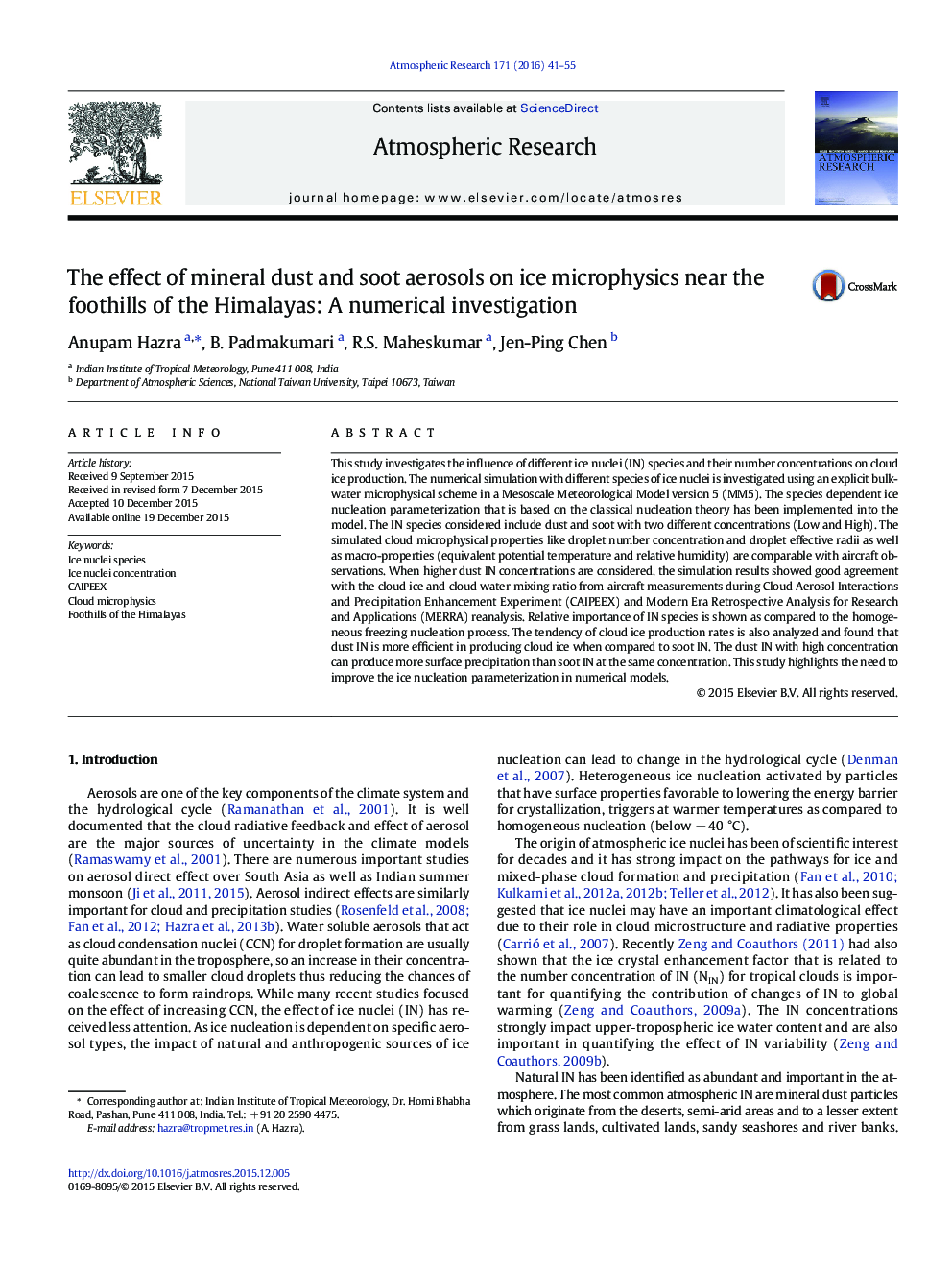| کد مقاله | کد نشریه | سال انتشار | مقاله انگلیسی | نسخه تمام متن |
|---|---|---|---|---|
| 4449601 | 1620506 | 2016 | 15 صفحه PDF | دانلود رایگان |
• Impact of ice nuclei species is investigated near foothills of the Himalayas.
• Role of ice nuclei number concentrations on cloud ice formation is studied.
• CNT based ice nucleation parameterization has been implemented into the model.
• Results are compared with CAIPEEX observation, MERRA reanalysis and TRMM.
This study investigates the influence of different ice nuclei (IN) species and their number concentrations on cloud ice production. The numerical simulation with different species of ice nuclei is investigated using an explicit bulk-water microphysical scheme in a Mesoscale Meteorological Model version 5 (MM5). The species dependent ice nucleation parameterization that is based on the classical nucleation theory has been implemented into the model. The IN species considered include dust and soot with two different concentrations (Low and High). The simulated cloud microphysical properties like droplet number concentration and droplet effective radii as well as macro-properties (equivalent potential temperature and relative humidity) are comparable with aircraft observations. When higher dust IN concentrations are considered, the simulation results showed good agreement with the cloud ice and cloud water mixing ratio from aircraft measurements during Cloud Aerosol Interactions and Precipitation Enhancement Experiment (CAIPEEX) and Modern Era Retrospective Analysis for Research and Applications (MERRA) reanalysis. Relative importance of IN species is shown as compared to the homogeneous freezing nucleation process. The tendency of cloud ice production rates is also analyzed and found that dust IN is more efficient in producing cloud ice when compared to soot IN. The dust IN with high concentration can produce more surface precipitation than soot IN at the same concentration. This study highlights the need to improve the ice nucleation parameterization in numerical models.
Journal: Atmospheric Research - Volume 171, 1 May 2016, Pages 41–55
